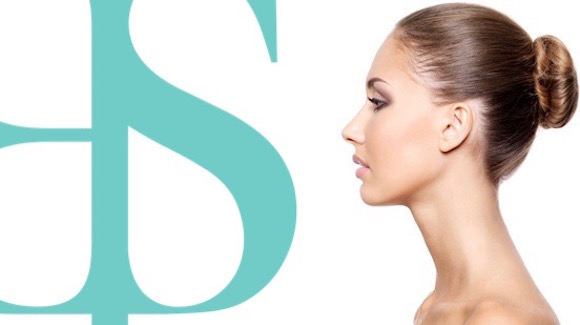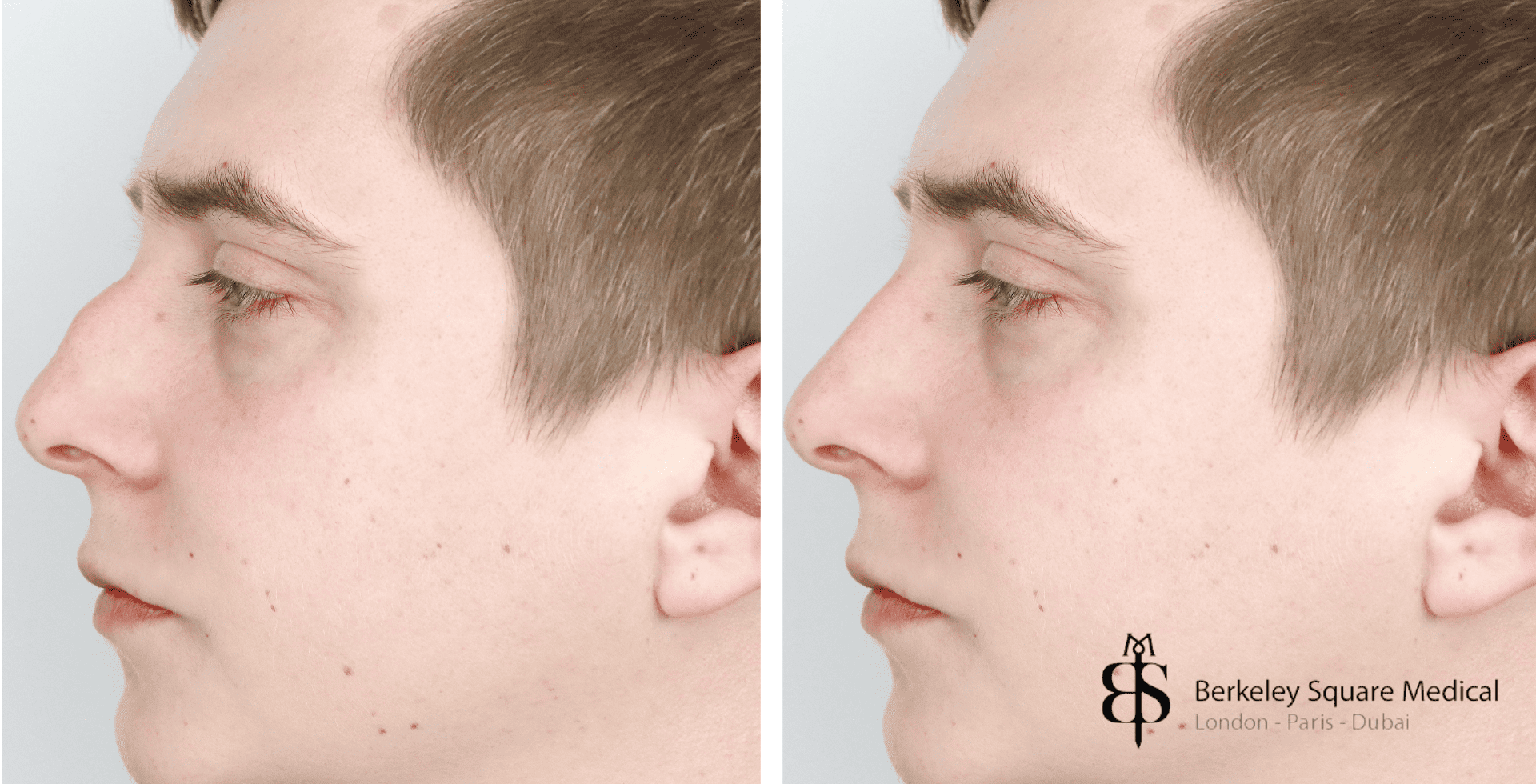
A dorsal hump is a common nasal feature that appears as a bump or convexity along the bridge of the nose. While completely natural, many people seek correction through dorsal hump rhinoplasty to achieve a straighter, more balanced profile.
This type of nose reshaping surgery involves reducing the bony and cartilaginous hump and refining the nasal shape to improve both facial harmony and confidence. In this article, we’ll explain what causes a dorsal hump, how it can be removed surgically or non-surgically, and what to expect before and after treatment—including costs, techniques, and recovery timelines.
A dorsal hump is a natural bump on the bridge of the nose, usually made up of bone and cartilage, and is most noticeable in a side profile.
Common causes of a nose hump include genetics, nasal trauma, developmental changes during puberty, or previous surgery.
Non-surgical options, such as dermal fillers, can temporarily disguise small humps but do not offer permanent results.
Dorsal hump rhinoplasty is a permanent solution that reshapes the bone and cartilage for a smoother nasal bridge and improved facial balance.
Full recovery takes several months, with most patients seeing visible improvements within the first few weeks.
A dorsal hump is a raised area along the nasal bridge, typically made up of both bone and cartilage. It usually extends from just below the eyes to the midpoint of the nose and is most visible when viewed in profile.
This feature can vary in size and shape and is often influenced by genetics, previous trauma, or developmental changes during adolescence. While a dorsal hump is a completely natural anatomical variation, it may alter the facial profile depending on its prominence.
A nose hump, or dorsal hump, can develop for several reasons:
Genetics: Most commonly, it’s inherited and runs in families.
Injury or Trauma: A broken nose or repeated impact can lead to a bump forming as the bone heals.
Developmental Changes: During puberty, cartilage and bone may grow unevenly, causing a visible hump.
Previous Surgery: An improperly healed or incomplete rhinoplasty may leave or create a dorsal hump.
Knowing the cause can help determine the best treatment—whether surgical or non-surgical.
In some cases, non-surgical options like dermal fillers can be used to mask the appearance of a mild dorsal hump. This technique, known as non-surgical rhinoplasty or liquid rhinoplasty, involves injecting fillers above and below the bump to create the illusion of a straighter bridge.
While this approach does not actually remove the hump, it can provide temporary results without the need for surgery. It’s best suited for patients with small, smooth humps and no major structural concerns, and results typically last between 9 to 18 months.
For those seeking permanent correction, dorsal hump rhinoplasty is the most effective treatment. This procedure involves removing or reshaping the bone and cartilage that make up the hump to create a smoother, more balanced nasal bridge.
Depending on your nasal anatomy and desired outcome, your surgeon may perform either an open or closed rhinoplasty. The surgery is typically done under general anaesthesia and takes around 1–3 hours. Recovery usually involves some swelling and bruising for the first two weeks, with final results becoming visible over several months as the tissues settle.
There are two main surgical techniques used to treat a dorsal hump: open and closed rhinoplasty. Both methods aim to reduce or reshape the nasal hump, but they differ in approach, visibility, and recovery.
Closed Rhinoplasty is performed through small incisions inside the nostrils, leaving no visible scars. It’s best suited for patients with minor to moderate dorsal humps and offers faster healing due to reduced tissue disruption.
Open Rhinoplasty involves an incision across the columella (the strip of tissue between the nostrils), allowing the surgeon greater visibility and precision. This technique is often preferred for complex dorsal hump removal, especially when tip refinement or cartilage grafts are needed.
Your surgeon will recommend the most appropriate method based on your nasal structure, goals, and whether additional functional issues—such as breathing problems—need to be addressed during the procedure.
At Berkeley Square Medical, a dorsal hump surgery is usually carried out with closed rhinoplasty techniques. This means the nose remains closed and operated on without opening up the nose. The benefits to this is a more instant result with a significantly faster recovery time.

One of the most common concerns among patients is what their nose will look like post-surgery. After dorsal hump rhinoplasty, your nasal bridge should appear straighter and more refined, helping your profile look smoother and more balanced.
If only the hump is removed without adjusting other parts of the nose, the nasal tip may appear more projected. That’s why it’s important to consider overall nasal harmony during planning—not just focus on one feature.
Advanced digital imaging during your consultation can help preview the expected outcome, giving you a more realistic idea of how your nose and facial profile will change after the procedure.
Recovery after dorsal hump surgery varies by patient, but most follow a general timeline:
First Week: Swelling, bruising, and mild discomfort are common. A splint is usually worn to support healing and maintain the new shape.
Week 2: Most visible bruising subsides, and many patients return to work or light activity.
1 to 3 Months: Swelling continues to decrease, and your nose shape refines.
6 to 12 Months: Final results become visible as all residual swelling fully resolves.
To ensure optimal healing, follow your surgeon’s aftercare instructions closely—this includes avoiding heavy lifting, wearing glasses, or putting pressure on the nose during recovery.
A dorsal hump is a raised bump on the bridge of the nose, typically made of bone and cartilage. It is most noticeable from a side profile and often appears as a convex curve between the eyes and the nasal tip.
Yes, mild dorsal humps can be masked using non-surgical rhinoplasty with dermal fillers. This temporary treatment smooths the nasal profile by filling the areas around the hump but does not physically remove it. Results last 9–18 months.
Yes, dorsal hump rhinoplasty offers a permanent solution. The procedure involves removing or reshaping bone and cartilage, and once healed, the results are long-lasting.
Most swelling and bruising subside within 2–3 weeks, and you can return to light activities during that time. Final results typically become visible after 6 to 12 months, once all internal swelling has fully resolved.
A properly performed dorsal hump rhinoplasty will not result in the hump growing back. However, incomplete removal, scar tissue, or healing complications can sometimes give the appearance of a residual or recurrent bump.
At Berkeley Square Medical, dorsal hump rhinoplasty starts from £7,950. This includes your initial consultation, surgery, and aftercare. Prices may vary depending on the complexity of the case and whether additional procedures like tip refinement are included.